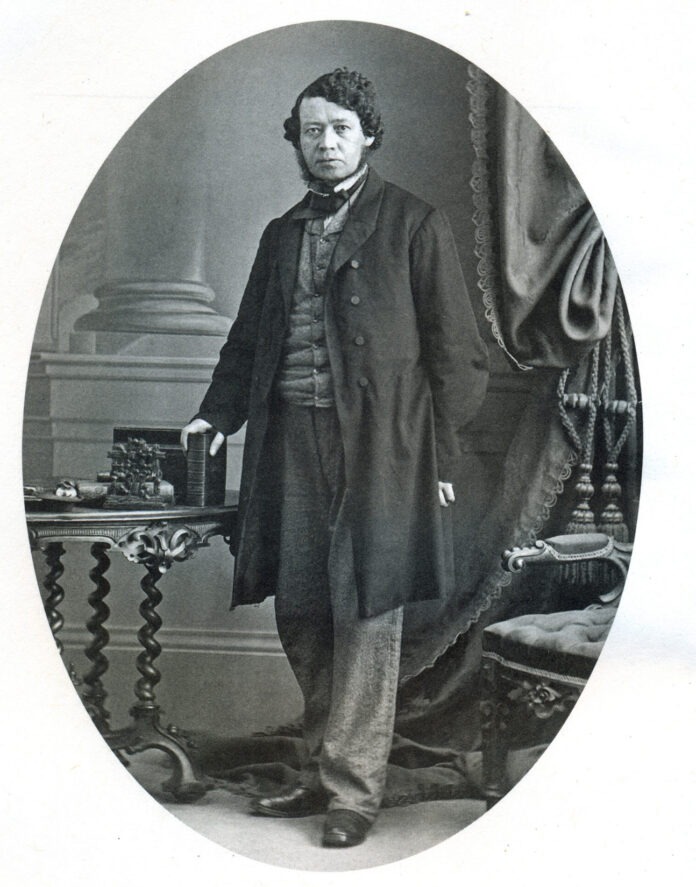Canadians, when they think about the Fathers of Confederation, which is rarely, probably imagine them as rather stern and colourless individuals. They see the old photographs taken in Charlottetown in that summer of 1864, the old‑fashioned clothes, the profusion of facial hair and the dour faces, and they judge them rather harshly. The rather odd fact of history is that the scheme of Confederation, as hammered out in September and October of that year, was carried through as much through long evenings and nights of parties, copious consumption of alcohol, and massive amounts of food, singing and dancing.
There was also, of course, serious discussion, constitutional debate, careful guarding of local and regional interests, and all the other aspects of creating a new country. But the long days of late summer of 1864 was the time in which Canada, as a new nation, was forged.
When the Canadians effectively forced the Maritimers to invite them to the conference they were planning in PEI that August, it forced the Lower Colonies to finalise plans for their meeting, which was to discuss uniting in a new Acadia, a single Maritime Province that would be stronger and more secure than its individual parts. But it cannot be said that there was a great deal of optimism among those politicians that such a union was possible, or even desired by most of the inhabitants. But the arrival of the Canadians changed all that.
Before they left for Charlottetown, the members of the Canadian Coalition Government locked themselves away on August 4 to draw up a detailed plan of how a confederation of the British American colonies would work. They had already discussed the concept at length in George Brown’s Committee in May, and now they surprised themselves at how quickly, and with what unanimity, they were able to draw up a proposal to put before the Maritimers when they travelled there in September.
One member of that Government was not present for those sessions: he was away on a rather special mission. On the day the sessions began, August 4, Thomas D’Arcy McGee departed on the government steamer “Queen Victoria”, along with one hundred journalists and politicians, on a social visit to New Brunswick and Nova Scotia. They had been invited by the St. John Board of Trade in an effort to improve commercial relations between the various British colonies. The timing of the invitation has been the source of some controversy ever since. Was it simply coincidence that this tour took place just before the gathering at Charlottetown? Was the invitation by the Board of Trade “inspired” by McGee and the Canadians?
Whatever its origins, the visit was a huge success. Receptions, parties, dances, speeches, all followed each other in a blur of good times and fine fellowship. McGee’s reputation as the best orator Canadian politics has ever known was enhanced, as he spoke again and again of the dream that he had been promoting ever since he had arrived in Montreal in 1857: a New Nationality. This meant, not just a new nation, a new political structure, but a new nationality, a new identity and culture which would transcend the old divisions of ethnicity, religion and provincialism that had marked and retarded British American development for so long.
By the time the visitors re‑embarked on the “Queen Victoria” and sailed back up the St. Lawrence, Maritimers were much more aware, and much more open to, these ideas of Union, Confederation and new nationality. McGee and friends had done a great deal to create the atmosphere which would make the Charlottetown Conference such a success.
He had hardly returned home to report on his success than he was back aboard the steamer, this time accompanied by the rest of the Canadian delegation, and was heading back down river to begin the series of meetings at which the new nation would be designed, new and revolutionary ideas of sovereignly and co‑ordinate powers would be developed, and many long nights of dancing, singing and drinking would cement new friendships and associations which would dominate political life in the coming Dominion for decades to come. McGee’s role continued at Charlottetown. As the only Canadian delegate to have actually toured the Maritimes in the past, speaking in halls and clubs on a number of visits since 1858, he introduced many of these men to each other for the first time, and became the common factor, the link between powerful personalities who might not otherwise have settled down to work together as quickly and openly as they did.
Ironically, the man who became known as Confederation’s Social Convenor, in addition to being the Prophet of Confederation, would be the one man among them who would not live to enjoy the fruits of his labours. The witty and eloquent McGee would effectively be the first martyr of the New Nationality, shot dead on Sparks Street in 1868.

